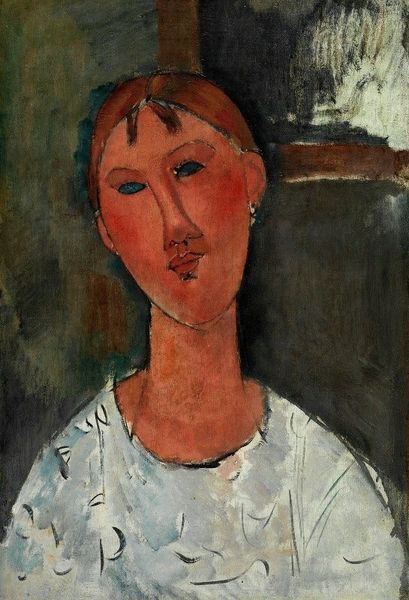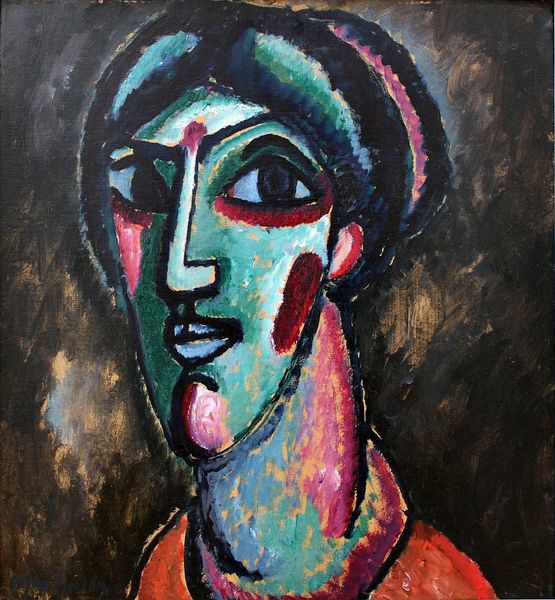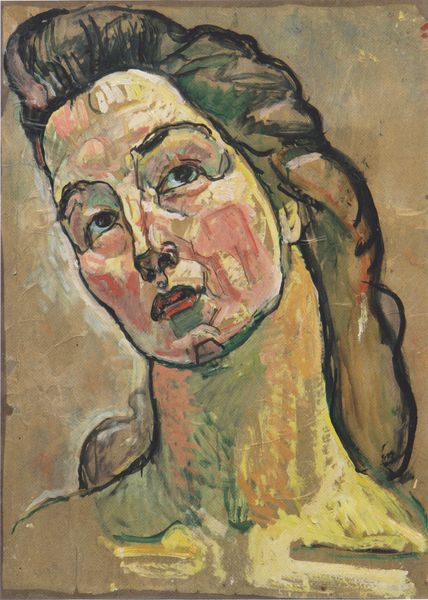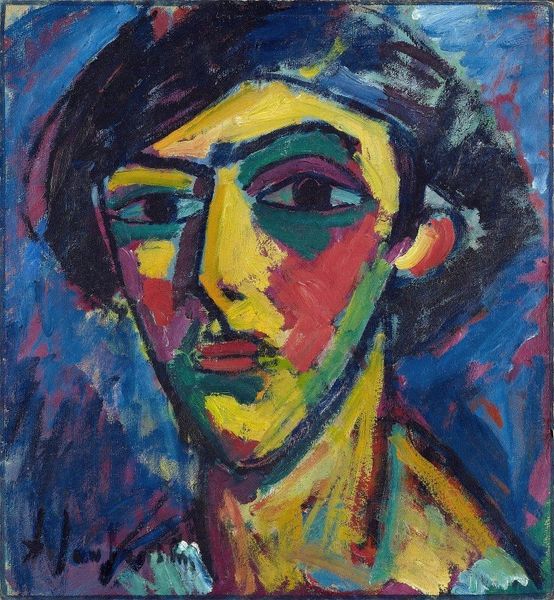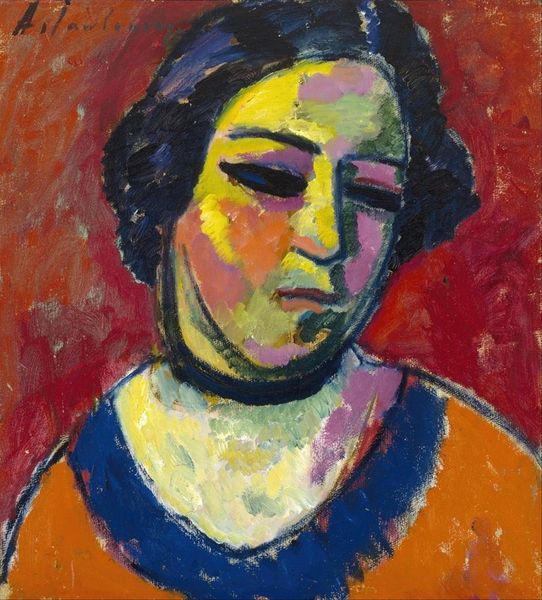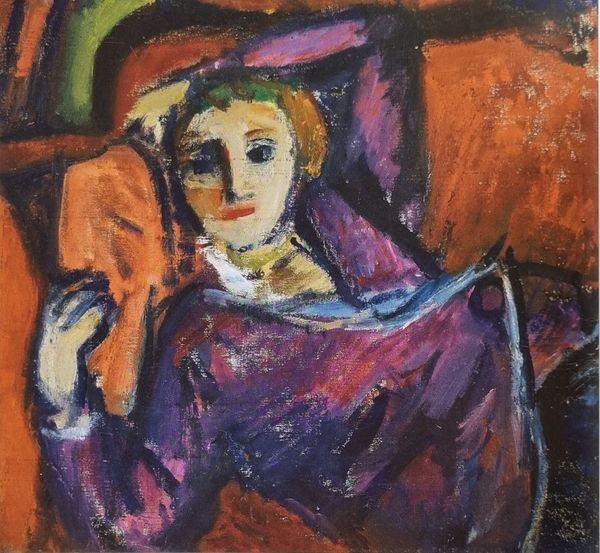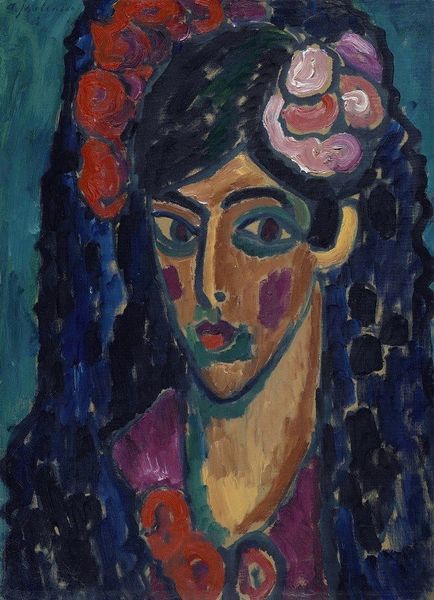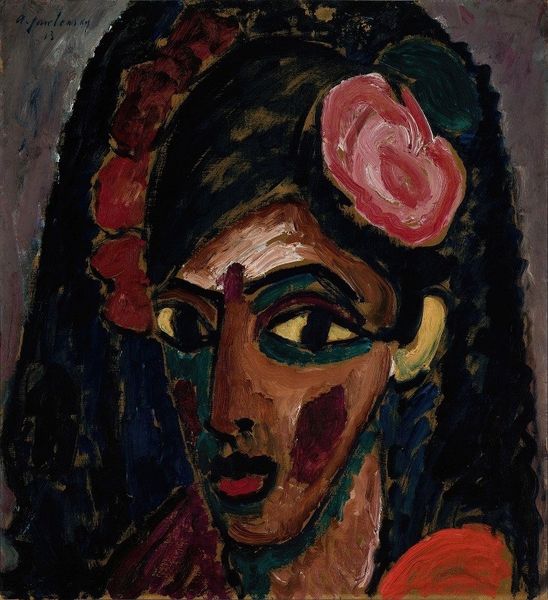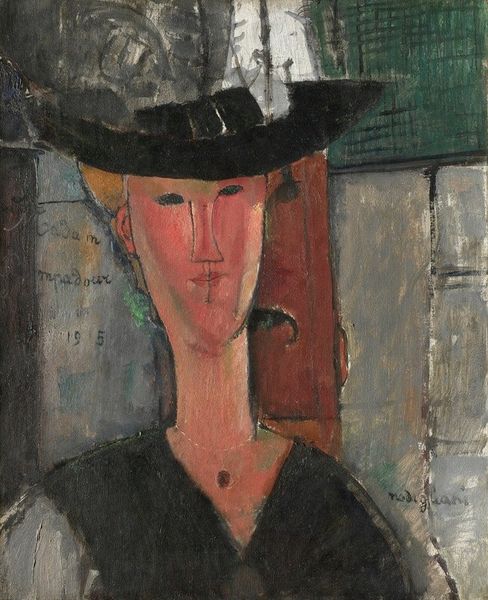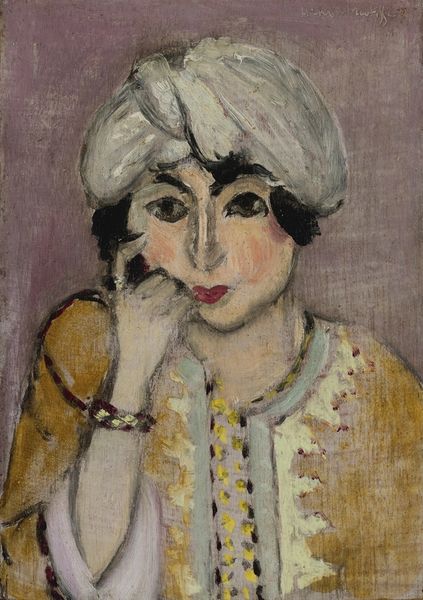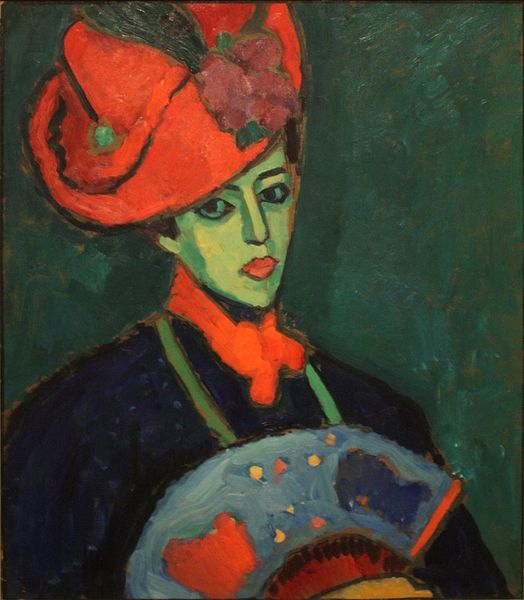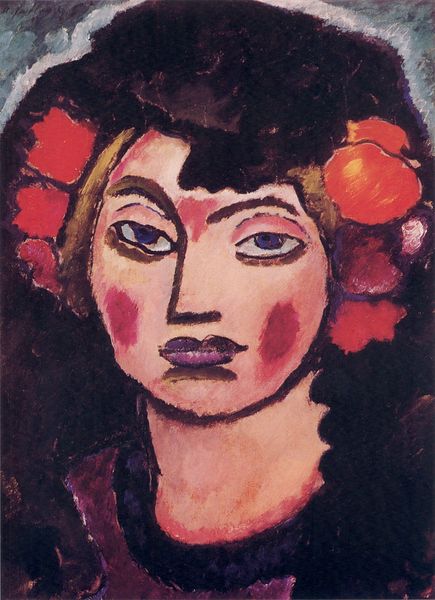
Dimensions: support: 651 x 498 mm frame: 1086 x 960 x 56 mm
Copyright: © ADAGP, Paris and DACS, London 2014 | CC-BY-NC-ND 4.0 DEED, Photo: Tate
Curator: Georges Rouault painted "The Italian Woman," and it now resides here at the Tate. The painting on the support measures roughly 65 by 50 centimeters. What strikes you first about this work? Editor: The face. Its iconic mask-like quality, evoking a sense of universal experience, almost timeless. It's a striking contrast with the vibrant reds and yellows hinting at passion and fleeting life. Curator: Rouault, emerging from a stained glass apprenticeship, often used heavy lines, reminiscent of lead divisions in glass, and intense colors to convey emotional and social realities, echoing his commitment to social justice. Editor: The closed eyes suggest a turning inward, a profound contemplation, perhaps even a melancholic resignation. The red floral adornments, however, feel like a defiant assertion of beauty amidst hardship. Curator: It's interesting how Rouault uses this figure as a proxy. While titled "The Italian Woman," it resonates with the broader human condition, highlighting the struggles of the working class and marginalized communities during his time. Editor: The rough, almost crude application of paint adds to the emotional intensity. It's as if the very materiality of the artwork amplifies the subject's silent scream. Curator: Rouault was deeply affected by the social inequities and moral corruption of his era, and that's reflected in his choice of subjects and his expressive style. He aimed to confront viewers with uncomfortable truths. Editor: A powerful representation, deeply rooted in symbolic language, that continues to resonate across cultures. Curator: Absolutely. It reminds us that art can be a potent vehicle for social commentary.
Comments
tate 6 months ago
⋮
http://www.tate.org.uk/art/artworks/rouault-the-italian-woman-n05906
Join the conversation
Join millions of artists and users on Artera today and experience the ultimate creative platform.
tate 6 months ago
⋮
Little is known about the subject of this work, but the painting is similar in style and composition to a number of frontal views of the heads of male and female clowns painted by the artist in 1937 and 1938. Rouault rarely painted portraits, preferring instead to use the human figure as a symbol of certain moral qualities or, more generally, to express the sufferings of mankind. The woman in this painting wears modern dress, but the treatment of her head distantly recalls traditional religious pictures, particularly Byzantine icons. Gallery label, August 2004
